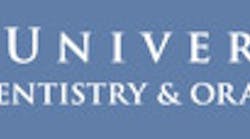KIRKSVILLE, Missouri--At its August 2013 meeting, the Commission on Dental Accreditation adopted a resolution to grant initial accreditation to A.T. Still University’s Missouri School of Dentistry & Oral Health.
The new dental school will be only the second in the state. Initial accreditation was the final step needed before the school could welcome its inaugural class and begin classes on Oct. 1, 2013. Selected from 954 applicants, the student body will comprise 22 women and 20 men from 19 states, including nine students from Missouri.
The mission of ATSU’s Missouri School of Dentistry & Oral Health is to increase access to oral health care for Missouri’s most vulnerable populations. The number of dentists in the state is declining while the underserved population and demand for dentists are rising.
Central to the new school’s curriculum is extensive, in-depth clinical training inside community health centers, as called for in a 2011 Institute of Medicine report. In Missouri, CHCs care for 420,000 vulnerable residents, or 25% of the total number of low-income and uninsured citizens. Collaboration with CHCs for on-site clinical education is the most effective way to break down the barriers to care faced by Missouri’s underserved populations.
Unlike any other dental school in the Midwest, graduates of ATSU’s Missouri School of Dentistry & Oral Health will earn a certificate of public health, in addition to a doctor of dental medicine degree,, which will prepare a workforce qualified to care for diverse, underserved populations. Partnerships with CHCs are expected to increase retention within the state’s oral health workforce by encouraging graduates to practice public health dentistry.
"We are very pleased with CODA's decision to grant initial accreditation," said ATSU president Craig Phelps, DO.
"It means ATSU may begin educating a new generation of oral health-care providers to meet the needs of our state and nation. Our "hometown" partnership program with CHCs will allow young women and men from underserved communities the opportunity to receive a degree and return home. Each dentist returning to his or her community will not only provide needed oral health care and public health expertise, but will also provide a valuable, positive economic impact."
Said Christopher Halliday, DDS, MPH, dean of the new dental school: “We are grateful to CODA for enabling us to move forward with our mission to educate community-minded oral care professionals through a groundbreaking, innovative model of dental education.”
Dr. Halliday has spent his career caring for the underserved in Alaska, New Mexico, and Arizona, and advocating on their behalf, most recently as assistant surgeon general of the United States.
Students will not have to wait until they graduate to begin filling the gaps in Missouri’s dental care. During their third and fourth years, they will be embedded inside Missouri CHCs, where their clinical education will include treating patients under supervision of faculty dentists. This will allow the centers to reach an additional 11,500 patients each year.
Students will be involved in dental care, from prevention to rehabilitation. They will work with the full spectrum of underserved patients, including children, adults, geriatric patients, the disabled, the homeless, and the uninsured.
ATSU-MOSDOH’s most comprehensive CHC relationship will be with St. Louis’ Grace Hill Health Centers, which provides primary medical, dental, and behavioral health services to a large segment of the city’s low-income and uninsured population. Beginning in the summer of 2015, GHHC--in partnership with ATSU--will operate an expansive new 85-operatory dental clinic.
After spending two years on ATSU’s Kirksville, Mo., campus, students will relocate to St. Louis for third-year clinical experiences at the ATSU-GHHC-operated clinic. During the fourth year, students will divide their time between St. Louis and additional CHC locations throughout Missouri and the Midwest that are partnering with ATSU.
Alan O. Freeman, GHHC’s president and CEO, said: “A brilliant aspect of the ATSU model is that it benefits the patients we serve from day one. And, the students will be able to develop an unusually nuanced understanding of the skills needed to care for our patients in their communities. This is a remarkable opportunity for Grace Hill and other participating CHCs, and we are very thankful for it.”
Added Gary Wiltz, MD, chair of the National Association of Community Health Centers Board of Directors and member, ATSU Board of Trustees: “ATSU’s partnership with Grace Hill is the first of its kind in the country and an exciting development for the community health center movement. We hope it will be a model for other dental schools of how to make oral health care an integral part of primary care services.”
The relationship with GHHC is just one of the critical partnerships that enable ATSU to realize its vision of an innovative model of dental education. In fact, it was a collaboration with the Missouri Primary Care Association that facilitated ATSU developing relationships with GHHC and the other CHCs.
Said MPCA CEO Joseph E. Pierle, “This curriculum, with its emphasis on placing students inside the communities most in need, reflects the out-of-the-box thinking needed to fix the problem here in Missouri and around the country.”
The Missouri Foundation for Health also provided support to ATSU’s new dental school by awarding $3 million in grants toward its development. Beginning with its inaugural class, ATSU-MOSDOH will help transform dental education by graduating community-minded dentists who will help address the shortage of oral health-care providers and improve access to oral health care among underserved areas and populations.
For more information, visit www.atsu.edu/mosdoh.
To comment on this topic, go to http://community.pennwelldentalgroup.com.
References available upon request from school.

Latest
Latest





